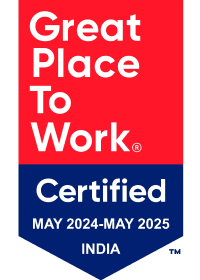Telehealth Integration in EHR to Assist Over-burdened Providers
Improved patient care by merging safety, communication, and real-time tools for providers: appointment alerts, pre-visit patient review, and live translation/transcription.
AI
EHR
Telehealth


BACKGROUND
Vintage isn’t cool when it comes to healthcare technology
A US-based workgroup of the COVID-19 Healthcare Coalition conducted a Telehealth Impact Study of roughly 1,600 healthcare providers.
Healthcare providers are overburdened with patient appointments, administrative tasks, and documentation requirements, leading to burnout and compromised patient care. The COVID-19 pandemic further emphasized the need for remote healthcare services.
The high-pressure environment brought upon by the pandemic called for a solution that would ease the burden on providers, not require additional efforts of adoption, and meet the mandated requirements.
THE PROBLEM
Makeshift telehealth tools lacked efficiency and raised security concerns
The multitude of existing OKR software never offered an intuitive experience. Employees would struggle to draft accurate objectives that would align with the assigned results. Managers, who would be tasked with checking and approving ORKs for multiple people could not keep up with the timelines, resulting in bottlenecks.
The result? Misaligned objectives and key results, which eventually impacted long-term productivity and business goals. The pandemic outbreak mandated distancing between providers and their patients who switched to using unorganized telehealth solutions. It resulted in complications for providers who had to shuffle between multiple tools to drive their consultations. It also raised serious concerns about the quality of care delivery and patient safety.
From the providers’ side, the challenges were manifold. These makeshift video conferencing tools were not designed to serve the needs such as:
- Talking to patients in a language other than English resulted in frequent miscommunication, causing errors in diagnosis
- The additional workload of entering the same patient information more than once meant extra workload for the already busy providers
- Toggling back and forth with the EHR to access patient information while on the call was distracting and hampered the quality of the interaction
The overall scenario emphasized the need to innovate quickly and create a viable solution.

OUR GOAL
Over 95% of U.S. hospitals use a certified EHR platform and maintain the highest standards of security and privacy. Thus, integrating the EHR system with a telehealth platform was the best way to help organizations make the most of this technology, which could drastically improve clinical workflows.
Build a solution that:
- Helped providers prep in advance for the upcoming appointment
- Aided accurate and smooth communication
- Helped providers make the most of the window between appointments
- Addressed post-consultation requirements
UX Strategy
Designing a viable solution in a short span
The Minimum Viable Product (MVP) strategy is an iterative design approach based on constant user feedback and remains user-focused throughout. It aims to tackle problems or address needs in unique ways. It is an opportunity to set a benchmark in the industry. Here’s how the MVP process panned out for this project:

We began with identifying the key user journeys that would define the MVP:
- Conducting a scheduled tele-visit appointment
- Adding a post-consultation documentation process

User Needs
- Time Constraints: Providers struggle to balance patient appointments, administrative tasks, and documentation, leading to longer work hours.
- Patient Accessibility: Some patients face barriers to in-person visits, making remote consultations via telehealth a valuable option.
- Workflow Disruption: Existing EHR systems may lack telehealth integration, requiring providers to switch between platforms during consultations.
- Documentation Challenges: Transferring telehealth session details to the EHR is often a manual and time-consuming process.
Ideation
We designed multiple variations of the UI and shortlisted 2 to be tested with healthcare providers and administrative staff to gather feedback. We iterated the design based on their input to ensure a user-friendly experience with the following considerations:
- Users should be able to view their appointment schedule upfront and manage their day
- Have an integrated solution that can be accessed with ease
- Display the content optimally so that it aids the conversation seamlessly
- The run-time translation should be easily accessible and accurate

Key Highlights
- The unified dashboard helps providers view upcoming in-person and telehealth appointments in one place.
- The one-click telehealth initiation button within the EHR appointment interface enables seamless integration.
- The split-screen interface allows providers to simultaneously document notes during the telehealth session in real-time.
- The custom algorithm automatically populates contextual data into patient records within the EHR during the call.
UI Design

Winner of the iF Design Award 2021
User Experience category

IMPACT
This telehealth-integrated EHR solution is used for 1.5 million minutes per day by 80,000 facilities encompassing 130,000+ physicians.
It carries an average rating of 4.0 on the App Store and Play Store.
Trials revealed a 15% improvement in Patient Satisfaction Scores and 1.8x reduction in Documentation Workload
1500+ healthcare UX projects completed for startups to industry leaders
Check out other HealthTech Projects
Bridging Gaps in Diagnosis and Treatment of Cardiovascular Disease


Radical EHR Solution That Humanizes Patient-Provider Interactions

Ready to Build a Scalable UX Practice?
Our embedded team model empowers you to transition from tactical UX fixes to a fully scalable, strategic UX practice - aligned with your business goals and built for healthcare's unique challenges.









